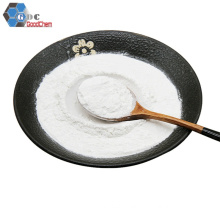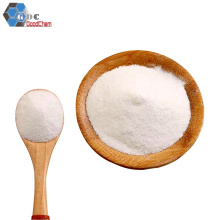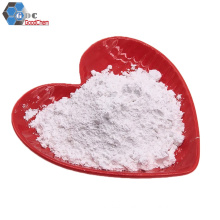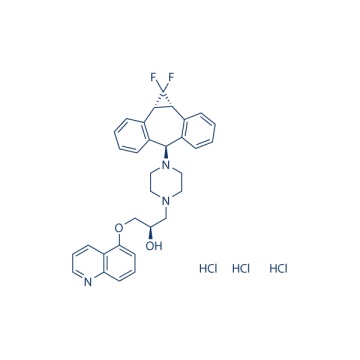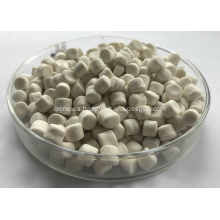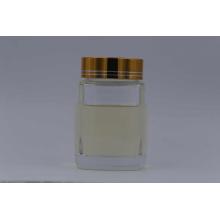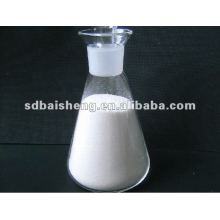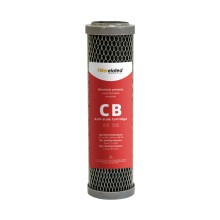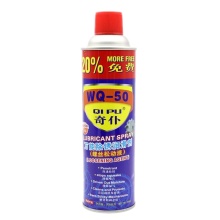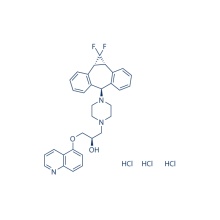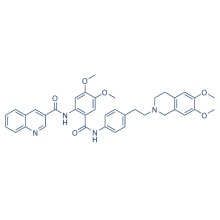.cp_wz tabla {borde superior: 1px sólido #ccc; borde izquierdo: 1px sólido #ccc; } .cp_wz table td {borde derecho: 1px sólido #ccc; borde inferior: 1px sólido #ccc; padding: 5px 0px 0px 5px;} .cp_wz table th {border-right: 1px solid #ccc; border-bottom: 1px solid #ccc; padding: 5px 0px 0px 5px;} \ n Peso molecular: 636,99 Zosuquidar (LY335979) es un potente modulador de la resistencia a múltiples fármacos mediada por la glicoproteína P con Ki de 60 nM. Fase 3. \ n LY335979 inhibe competitivamente la unión en equilibrio de [3H] vinblastina a Pgp bloqueando el marcaje de fotoafinidad de [3H] azidopina de Pgp en membranas plasmáticas CEM / VLB100. El LY335979 solo muestra la citotoxicidad en líneas celulares sensibles a fármacos y MDR con IC50 que van desde 6 μM-16 μM y produce su capacidad para revertir completamente la resistencia de los oncolíticos (vinblastina, doxorrubicina o etopósido) a las líneas celulares MDR P388 / ADR , MCF7 / ADR, 2780AD o UCLA-P3.003VLB a una concentración de 0,1 y 0,5 μM. LY335979 restaura significativamente la sensibilidad al fármaco en líneas celulares de leucemia que expresan P-gp, incluidas K562 / HHT40, K562 / HHT90, K562 / DOX y HL60 / DNR, y mejora la citotoxicidad de las antraciclinas (daunorrubicina, idarrubicina, mitoxantrona) y gemotrubicina. en blastos primarios de AML con P-gp activa. Un artículo más reciente indica que LY335979 inhibe completamente el transporte dirigido apicalmente de (Z) -endoxifeno en las células transducidas con ABCB1. \ n Protocolo (solo como referencia) Ensayo de quinasa:
|
ATPase Assay
|
P-Glycoprotein ATPase activity is measured by the liberation of inorganic phosphate from ATP. The assay is measured in a 96-well plate for 90 min at 37 °C. Membranes (8 μg-10 μg protein) are incubated in a total volume of 100 μL of buffer A containing 5 mM sodium azide, 1 mM ouabain, 1 mM EGTA, 3 mM ATP, an ATP regenerating system composed of 5 mM phosphoenolpyruvate, and 3.6 units/mL pyruvate kinase in the presence and absence of 1 mM sodium vanadate. Pgp-ATPase activity is defined as the vanadate-sensitive portion of the total ATPase activity. Plates are read 3 minutes after the addition of the detection solution. The absorbance is measured at 690 nm by a microtiter dish reader. A phosphate standard curve is used to calculate the μmol of phosphate formed. Samples are measured in triplicate.
|
Ensayo celular: [1]
|
Cell lines
|
CEM/VLB100, P388/ADR, MCF7/ADR, 2780AD, and UCLA-P3.OO3VLB cells
|
|
Concentrations
|
0.05 μM to 5 μM
|
|
Incubation Time
|
72 hours
|
|
Method
|
Cell viability is determined using a modified 3-(4,5-dimethylthiazol-2-yl)-2,5-diphenyltetrazolium bromide dye reduction method. Cells are harvested during logarithmic growth phase, and seeded in 96-well plates. The cells are then cultured for 72 hours in the presence of oncolytics with or without modulators. MCF-7 and MCF-7/ADR cells are incubated 24 hours before the addition of the drug with and without the LY335979. LY335979 is prepared as 2 mM DMSO stocks and added to wells to give final concentrations ranging from 0.05 to 5 μM. After 72 hours, 20 μL of freshly prepared 3-(4,5-dimethylthiazol-2-yl)-2,5-diphenyltetrazolium bromide (5 mg/mL in Dulbecco's PBS) is added to each well and incubated for 4 hours in a 37 °C incubator containing 5% CO2. Cells are pelleted in a Sorvall RT6000B centrifuge, 70 μL of medium is carefully removed from each well, and 100 μL of 2-propanol/0.04 N HC1 is added. Cells are resuspended 5-10 times with a Multipipettor or until no particulate matter is visible. Plates are immediately read on a Titertek Multiskan MCC/340 microplate reader Flow Laboratories with a test wavelength of 570 nm and a reference wavelength of 630 nm. Controls are measured in quadruplicate and modulators are measured in duplicate. Cytotoxicity analyses are also performed using the CeliTiter 96 AQueous assay kit.
|
Conversión de diferentes modelos de animales basados en BSA (valor basado en datos del Borrador de Directrices de la FDA)
|
Species
|
Baboon
|
Dog
|
Monkey
|
Rabbit
|
Guinea pig
|
Rat
|
Hamster
|
Mouse
|
|
Weight (kg)
|
12
|
10
|
3
|
1.8
|
0.4
|
0.15
|
0.08
|
0.02
|
|
Body Surface Area (m2)
|
0.6
|
0.5
|
0.24
|
0.15
|
0.05
|
0.025
|
0.02
|
0.007
|
|
Km factor
|
20
|
20
|
12
|
12
|
8
|
6
|
5
|
3
|
|
Animal A (mg/kg) = Animal B (mg/kg) multiplied by
|
Animal B Km
|
|
Animal A Km
|
Por ejemplo, para modificar la dosis de resveratrol utilizada para un ratón (22,4 mg / kg) a una dosis basada en el BSA para una rata, multiplique 22,4 mg / kg por el factor Km para un ratón y luego divida por el factor Km para una rata. Este cálculo da como resultado una dosis equivalente para ratas de resveratrol de 11,2 mg / kg.
|
Rat dose (mg/kg) = mouse dose (22.4 mg/kg) ×
|
mouse Km(3)
|
= 11.2 mg/kg
|
|
rat Km(6)
|
Información química
|
Molecular Weight (MW)
|
636.99
|
|
Formula
|
C32H31F2N3O2.3HCl
|
|
CAS No.
|
167465-36-3
|
|
Storage
|
3 years -20℃Powder
|
|
6 months-80℃in solvent (DMSO, water, etc.)
|
|
Synonyms
|
|
|
Solubility (25°C) *
|
In vitro
|
DMSO
|
100 mg/mL
(156.98 mM)
|
|
Water
|
23 mg/mL
(36.1 mM)
|
|
Ethanol
|
<1 mg/mL
(
|
|
In vivo
|
30% PEG400/0.5% Tween80/5% propylene glycol
|
30 mg/mL
|
|
|
Chemical Name
|
1-Piperazineethanol, 4-[(1aα,6α,10bα)-1,1-difluoro-1,1a,6,10b-tetrahydrodibenzo[a,e]cyclopropa[c]cyclohepten-6-yl]-α-[(5-quinolinyloxy)methyl]-,trihydrochloride
|
Calculadora de molaridad Calculadora de dilución Calculadora de peso molecular
Grupos de Producto : Señalización neuronal > Inhibidor de P-gp
